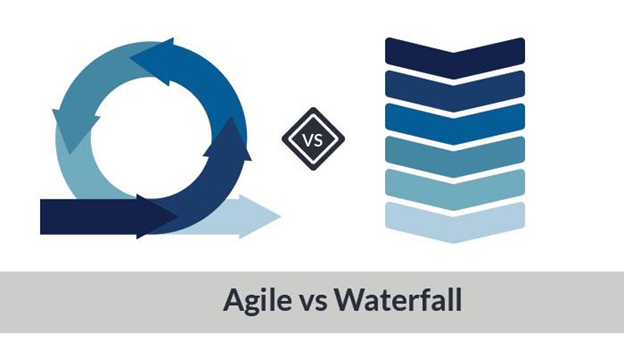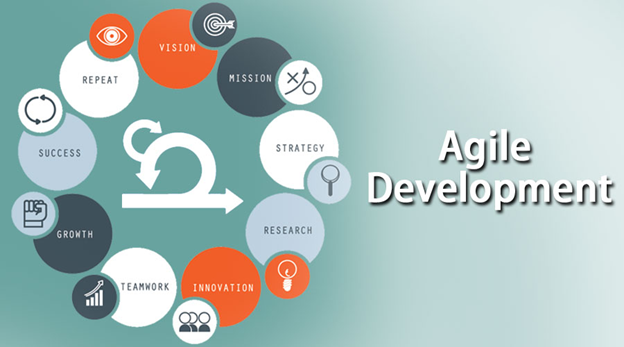The evolution of product development from rigid, linear methodologies to dynamic, iterative approaches has revolutionized the software industry. Traditional models like the Waterfall Method, with their sequential phases and fixed requirements, often fell short of meeting the fast-paced demands of modern markets. In response, Agile development emerged, offering a flexible, collaborative, and customer-focused framework that emphasizes adaptability and continuous improvement.
However, as Agile practices have evolved, the need for tools to effectively manage the inherent complexity has become evident. Product management software has risen to meet this need, providing a centralized platform that integrates communication, task management, and data analytics. This software not only supports Agile principles but also enhances them, ensuring that development processes remain streamlined and efficient.
In this article, we will delve into how product management software transforms Agile development, overcoming traditional challenges and driving successful project outcomes.
The Evolution of Agile Development
The evolution of Agile development is rooted in the historical context of software engineering practices. In the late 20th century, traditional methodologies like Waterfall dominated the software development landscape. These approaches followed a linear sequence of phases, with fixed requirements and little room for adaptation.
However, as technology advanced and market demands shifted, it became evident that this rigid approach was no longer sustainable. Agile development emerged as a response to these challenges, advocating for iterative, collaborative, and customer-centric approaches to software delivery.
Key Milestones
Key milestones in the adoption of Agile practices began with the publication of the Agile Manifesto in 2001. Crafted by a group of software developers seeking alternatives to heavyweight development processes, the manifesto emphasized individuals and interactions over processes and tools, working software over comprehensive documentation, customer collaboration over contract negotiation, and responding to change over following a plan.
Subsequently, methodologies such as Scrum, and Kanban, gained traction, offering structured frameworks for implementing Agile principles. These methodologies introduced concepts such as sprints, stand-up meetings, and continuous integration, further refining Agile practices and enabling teams to deliver value incrementally.
The adoption of Agile practices continues to evolve, with organizations across industries embracing its principles to stay competitive in an ever-changing market landscape.
How Product Management Software Transforms Agile Development
Product management software revolutionizes Agile development by providing a suite of tools that streamline processes, enhance collaboration, and drive productivity. Here’s how it transforms Agile development:
1. Easy Communication
By consolidating all communications onto a single platform, product management software eliminates the need for scattered emails and disjointed conversations. This centralized approach ensures that all team members have access to important updates, discussions, and decisions, leading to better coordination and alignment.
2. Automate Workflow
Product management software automates repetitive tasks, such as task assignments, reminders, and notifications, freeing up valuable time for team members to focus on higher-value activities. Examples of automated processes include automatically assigning tasks based on priority, sending reminders for upcoming deadlines, and notifying stakeholders of changes in project status.
3. Use Analytics
Leveraging analytics and reporting tools, product management software provides valuable insights into project progress, team performance, and stakeholder feedback. Teams can achieve better project outcomes by identifying bottlenecks, making educated decisions, and making necessary adjustments by analyzing real-time data.
4. Integrate with Tools
Product management software seamlessly integrates with existing tools and systems, allowing teams to work with their preferred tools while still benefiting from the advantages of a centralized platform. Popular integrations include connecting with communication tools like Slack for real-time messaging and collaboration or linking with version control systems like GitHub for seamless code management.
5. Flexible to Change
As teams and projects grow, product management software adapts to accommodate changing needs and requirements. With customization options and flexible workflows, teams can tailor the software to fit their unique processes and scale effortlessly as their projects evolve.
Product management software, in general, supports Agile development by empowering teams to work together efficiently, automate repetitive processes, make use of data insights, integrate with emerging technologies, and quickly adjust to changing requirements.
Future Trends in Agile and Product Management Software
A report by Gartner predicts that by 2025, 70% of software development projects will incorporate AI capabilities, emphasizing the growing importance of artificial intelligence in Agile development and product management.
The future of Agile development and product management software is being shaped by cutting-edge technologies, with AI and machine learning at the forefront. AI-driven tools are set to transform project management by providing predictive analytics, automating routine tasks, and optimizing workflows. For instance, AI can predict potential bottlenecks, suggest resource allocations, and provide insights based on historical data, enhancing decision-making processes.
As remote work continues to rise, integrating AI with robust communication tools will foster better collaboration across dispersed teams. Additionally, advanced tools will offer deeper integration with DevOps practices, enhanced security features, and greater customization capabilities. These innovations will make Agile teams more efficient, responsive, and resilient, positioning them for success in an increasingly dynamic and competitive market.
Conclusion
Product management software has fundamentally transformed Agile development by centralizing communication, automating workflows, and providing valuable data insights. These tools enable teams to collaborate more effectively, make informed decisions, and adapt quickly to changes.
As the Agile landscape continues to evolve, embracing continuous innovation and integrating advanced technologies like AI will be essential. These advancements not only enhance efficiency and productivity but also ensure that Agile teams remain responsive and resilient in a dynamic market. The future of Agile development lies in leveraging these cutting-edge tools to drive success and maintain a competitive edge in the tech industry.
Frequently Asked Questions (FAQs)
- How does product management software support Agile practices?
Product management software supports Agile practices by offering a centralized platform for communication, task management, and real-time analytics. It streamlines workflows through features like Kanban boards and Gantt charts, enhances team collaboration with tools for real-time updates and notifications, and provides insights through reporting and performance metrics. This ensures that teams can efficiently manage sprints, track progress, prioritize tasks, and adapt quickly to changes, aligning with Agile principles of flexibility and continuous improvement.
- What is Agile Scrum Methodology, and how is it applied in product management?
Agile Scrum is a framework within Agile methodology that focuses on iterative development and continuous feedback. It involves roles such as Scrum Master and Product Owner, ceremonies like daily stand-ups and sprint reviews, and artifacts including the product backlog and sprint backlog. In product management, Scrum is applied by breaking down the product development process into manageable sprints, typically lasting 2-4 weeks. Teams work collaboratively during these sprints to deliver incremental improvements, ensuring that the product evolves based on user feedback and changing requirements.
- How can AI enhance product management software in Agile development?
AI can enhance product management software in Agile development by providing predictive analytics, automating repetitive tasks, and optimizing workflows. AI-driven tools can predict potential project bottlenecks, recommend optimal resource allocations, and analyze historical data to improve decision-making. Automation features can streamline task assignments, send timely notifications, and update project statuses, freeing up team members to focus on more strategic activities. These capabilities lead to more efficient, informed, and proactive Agile processes.
- What are some popular product management software tools for Agile teams?
Popular product management software tools for Agile teams include Jira, Shorter Loop, Trello, and Monday.com. Jira is widely used for its robust features in issue tracking and sprint planning. Shorter Loop is an End-to-End Product Management Platform to discover, strategize and deliver. Trello offers a visually intuitive Kanban board for task management, while Monday.com offers customizable workflows and integrations with other tools. These platforms support Agile practices by facilitating task management, team collaboration, and real-time project visibility.
Read More From Techbullion And Businesnewswire.com





































